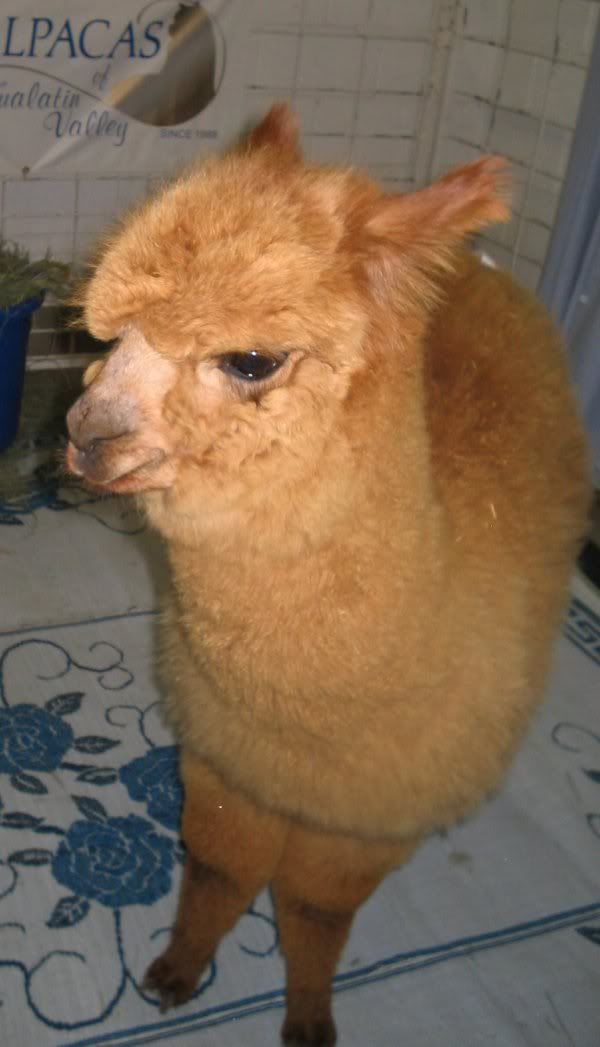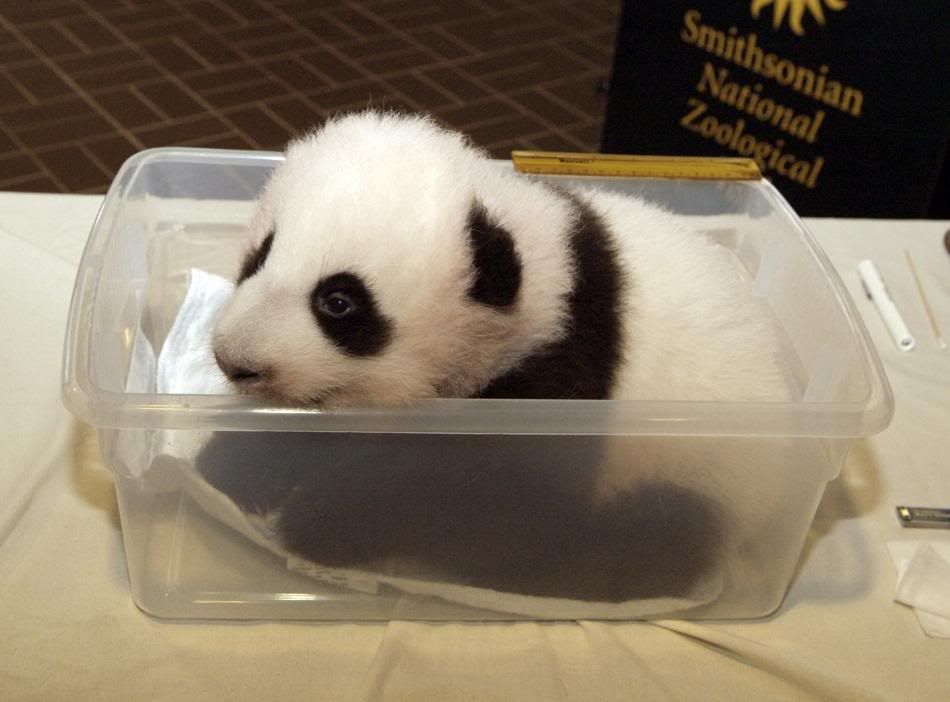Thursday, January 12, 2006
Wednesday, January 11, 2006
Spitting Alpaca

The Alpaca (Vicugna pacos) is one of two domesticated breeds of South American camel-like ungulates, derived from the wild guanaco. It resembles a sheep in appearance, but is larger in size, and has a long erect neck with a handsome head.Alpacas have been domesticated for thousands of years, and originate from Peru, Chile and Bolivia. There are no wild alpacas; it is believed that they are descended from the vicuna which is also native to South America. They are closely related to llamas which are descended from the guanaco. These four species of animals are collectively called camelids.Alpacas are social herd animals and should always be kept with others of their kind. They are gentle and elegant, inquisitive and observant. As they are a prey animal, rather than a predator, they are cautious and will understandably be nervous if they feel threatened. They like their own space and don’t appreciate another alpaca (or human) getting too close, especially from behind. They will warn the intruder away by threatening to spit, or by spitting, or by kicking. Some alpacas kick, some don’t – but yes, they all spit.
Spitting is reserved for other alpacas, not for humans, but sometimes the human can get in to the line of fire, or the alpaca aims badly and misses the intended target. Spit is not pleasant – it is the contents of the stomach, it is green (regurgitated grass) and smells foul.
Alpacas don’t like their heads being touched. Once they know their owners, and feel confident around them, they will probably allow their backs and necks to be touched, but they won’t appreciate being grabbed, especially by boisterous children. If an owner need to catch an alpaca, the neck offers a good handle – and holding the neck firmly between the arms is the best way to restrain the animal.
Tuesday, January 10, 2006
Hedgehog
 The hedgehog was originally referred to as an urchin, which gives rise to other terms, such as calling an offensive child an urchin and the common sea urchin. The most common pet species of hedgehog are hybrids of the white-bellied hedgehog or four-toed hedgehog (Atelerix albiventris) and the Algerian hedgehog (A. algirus). It is smaller than the European hedgehog, and thus is sometimes called African pygmy hedgehog. Other species kept as pets are the Egyptian long-eared hedgehog (Hemiechinus auritus auritus) and the Indian long-eared hedgehog (H. collaris). All three species prefer a warm climate (above 72°F/22°C) and do not hibernate. Attempts to hibernate are commonly fatal. They eat a diet of mainly catfood, ferret food and insects and other animals.All hedgehogs are primarily nocturnal, although different species can be more or less likely to come out in the daytime. The hedgehog sleeps for a large portion of the daytime either under cover of bush or grass or rock or in a hole in the ground. Again, different species can have slightly different habits, but in general hedgehogs dig out dens for shelter. All wild hedgehogs can hibernate, although not all do; hibernation depends on temperature, abundance of food and species. Hedgehogs are fairly vocal, and communicate not only in a series of grunts and snuffles, but sometimes in loud squeals (depending on species).
The hedgehog was originally referred to as an urchin, which gives rise to other terms, such as calling an offensive child an urchin and the common sea urchin. The most common pet species of hedgehog are hybrids of the white-bellied hedgehog or four-toed hedgehog (Atelerix albiventris) and the Algerian hedgehog (A. algirus). It is smaller than the European hedgehog, and thus is sometimes called African pygmy hedgehog. Other species kept as pets are the Egyptian long-eared hedgehog (Hemiechinus auritus auritus) and the Indian long-eared hedgehog (H. collaris). All three species prefer a warm climate (above 72°F/22°C) and do not hibernate. Attempts to hibernate are commonly fatal. They eat a diet of mainly catfood, ferret food and insects and other animals.All hedgehogs are primarily nocturnal, although different species can be more or less likely to come out in the daytime. The hedgehog sleeps for a large portion of the daytime either under cover of bush or grass or rock or in a hole in the ground. Again, different species can have slightly different habits, but in general hedgehogs dig out dens for shelter. All wild hedgehogs can hibernate, although not all do; hibernation depends on temperature, abundance of food and species. Hedgehogs are fairly vocal, and communicate not only in a series of grunts and snuffles, but sometimes in loud squeals (depending on species).
Monday, January 09, 2006
Kitten
 Cat has been living in close association with humans for at least 3,500 years; the Ancient Egyptians routinely used cats to keep mice and other rodents away from their grain (and also believed that cats were sacred). Its most immediate, pre-domestication ancestor is the African wild cat, which is a solitary animal. Dogs, on the hand, have been living in close association with humans for at least 10,000 years, and were domesticated from wolves, which are social animals. This difference in origin may partially explain why cats are loners while dogs need company.
Cat has been living in close association with humans for at least 3,500 years; the Ancient Egyptians routinely used cats to keep mice and other rodents away from their grain (and also believed that cats were sacred). Its most immediate, pre-domestication ancestor is the African wild cat, which is a solitary animal. Dogs, on the hand, have been living in close association with humans for at least 10,000 years, and were domesticated from wolves, which are social animals. This difference in origin may partially explain why cats are loners while dogs need company.
Sunday, January 08, 2006
Baby Donkey
 Interesting facts about donkeys...
Interesting facts about donkeys...- China has the largest donkey population in the world estimated at 11 million.
- Large donkeys in America are called mammoth asses and measure up to 16.2 hands, or as big as a police horse.
- Most of the wagon trains that opened up the American West were pulled by mules.
- The great wealth of the Egyptians was due to the precious metals carried from Africa by donkeys.
- The wool that was exported from South Australia in the 19th century was carried to the rail head by teams of donkeys, sometimes up to 24 in a single hitch.
Friday, January 06, 2006
Thursday, January 05, 2006
Yes, that's a rabbit!

The Angora rabbit is a variety of domestic rabbit bred for its long, soft hair. They are believed to have originated in Turkey, along with the Angora cat and Angora goat. The rabbits were popular pets with French royalty in the mid 1700s, and spread to other parts of Europe by the end of the century. They first appeared in the United States in the early 1900s.
Check out Betty Chu's web site which features this and many more Best in Show Angora Rabbits!
Wednesday, January 04, 2006
Baby Bonobo

Bonobos diverged from Common Chimpanzees after the last Common Chimpanzee ancestor diverged from its last common ancestor with humans. Since no species other than Homo sapiens has survived from the human line of that branching, Bonobos and Common Chimpanzees are the closest living relatives of humans, sharing approximately 95% of their DNA with humans (the original estimate was 98.5 percent). Bonobos passed the mirror-recognition test for self-awareness in 1994. They communicate through primarily vocal means, although the meanings of their vocalizations are not currently known; however, we do understand some of their natural hand gestures, such as their invitation to play. Two Bonobos, Kanzi and Panbanisha have been taught a vocabulary of about 400 words which they can type using a special keyboard of lexigrams (geometric symbols), and can respond to spoken sentences. Some, such as bioethicist Peter Singer, argue that these results qualify them for the same rights as humans.




